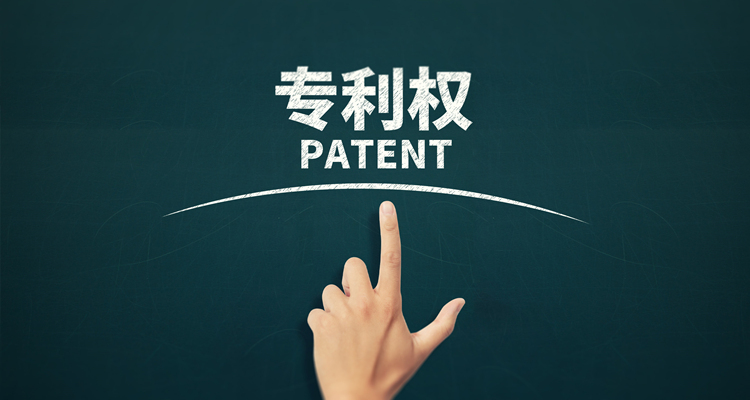当地时间12月6日,美国司法部(DOJ)发布“关于标准必要专利(SEPs)新政策声明草案”(以下简称草案),请求公众就F/RAND承诺的标准必要专利许可谈判和救济措施政策草案发表意见。
草案旨在促进善意许可谈判,并解决已同意以合理和非歧视性或公平、合理和非歧视性(F/RAND)条款许可其基本技术的专利权人可获得的救济范围。美国司法部(DOJ)、美国专利商标局(USPTO)和国家标准与技术研究所(NIST)共同响应拜登总统最近发布的关于促进美国经济竞争的行政命令,鼓励各机构审查并完善2019年《标准必要专利救济政策声明》,以确保该声明充分促进竞争。在与联邦贸易委员会(Federal Trade Commission)磋商后,上述机构共同发布了修订后的声明草案,并向公众征求意见。
继美国司法部发布标准必要专利草案后,当地时间12月7日,英国知识产权局(UKIPO)随即发布了“标准必要专利与创新:征求意见”的通知,就27个相关标准必要专利问题向公众征求意见。旨在为英国创造最佳的知识产权框架,以促进现在和未来的创新和创造力,同时支持政府在创新战略和多样化战略中设定的规划及目标。
附原文——美国草案:
Public Comments Welcome on Draft Policy Statement on Licensing Negotiations and Remedies for Standards-Essential Patents Subject to F/RAND Commitments
The Department of Justice announced today that it is requesting public comment on a new draft policy statement concerning standards-essential patents (SEPs) that seeks to promote good-faith licensing negotiations and addresses the scope of remedies available to patent owners that have agreed to license their essential technologies on reasonable and non-discriminatory or fair, reasonable, and non-discriminatory (F/RAND) terms. The Justice Department worked with U.S. Patent and Trademark Office (USPTO) and the National Institute of Standards and Technology (NIST) in responding to President Biden’s recent Executive Order on Promoting Competition in the American Economy, which encouraged the agencies to review the 2019 Policy Statement on Remedies for Standards-Essential Patents Subject to Voluntary F/RAND Commitments to ensure that it adequately promoted competition. Together the agencies, after consulting with the Federal Trade Commission, are now issuing a revised draft statement for public comment.
“The department looks forward to working with our agency partners,” said Assistant Attorney General Jonathan Kanter of the Justice Department’s Antitrust Division. “We are committed to taking a principled, transparent, and balanced approach at the intersection of intellectual property and antitrust law.”
The draft statement is open to public comment for 30 days and provides a framework to facilitate good-faith licensing negotiation between SEP owners and potential licensees. It also discusses what remedies may be available when SEPs subject to voluntary F/RAND commitments are infringed. The draft statement indicates that good-faith negotiation that leads to widespread and efficient licensing between SEP holders and those who seek to implement standardized technologies can help to promote technology innovation, further consumer choice, and enable industry competitiveness. The draft statement will not be finalized until the agencies consider all stakeholder input.
In particular, the agencies are interested in comments addressing the following questions:
Should the 2019 Policy Statement on Remedies for Standards-Essential Patents Subject to Voluntary F/RAND Commitments be revised?
Does the draft revised statement appropriately balance the interests of patent holders and implementers in the voluntary consensus standards process, consistent with the prevailing legal framework for assessing infringement remedies?
Does the draft revised statement address the competition concerns about the potential for extension of market power beyond appropriate patent scope identified in the July 9, 2021 Executive Order on Promoting Competition in the American Economy?
In your experience, has the possibility of injunctive relief been a significant factor in negotiations over SEPs subject to a voluntary F/RAND commitment? If so, how often have you experienced this?
Are other challenges typically present in negotiating a SEP license? If so, what information should be provided or exchanged as a practical matter to make negotiation more efficient and transparent?
Are small business owners and small inventors impacted by perceived licensing inefficiencies involving SEPs? If so, how can licensing be made more efficient and transparent for small businesses and small inventors that either own, or seek to license, SEPs?
Will the licensing considerations set forth in the draft revised Statement promote a useful framework for good-faith F/RAND licensing negotiations? In what ways could the framework be improved? How can any framework for good-faith negotiations, and this framework in particular, better support the intellectual property rights policies of standards-setting organizations?
What other impacts, if any, would the draft revised statement have on standards-setting organizations and contributors to the standards development process?
The draft revised statement discusses fact patterns intended to indicate when a potential licensee is willing or unwilling to take a F/RAND license. Are there other examples of willingness or unwillingness that should be included in the statement?
Have prior executive branch policy statements on SEPs been used by courts, other authorities, or in licensing negotiations? If so, what effect has the use of those statements had on the licensing process, outcomes, or resolutions?
Are there resources or information that the U.S. government could provide/develop to help inform businesses about licensing SEPs subject to a voluntary F/RAND commitment?
Interested parties, including attorneys, economists, academics, consumer groups, industry stakeholders or other members of the public may submit public comments to Regulations.gov until Jan. 5, 2022. Information about the draft revised statement can also be found on the Antitrust Division’s website.
附原文——英国征求意见稿:
Standard Essential Patents and Innovation: Call for views
The government seeks views as to whether the Standard Essential Patents (SEPs) ecosystem (i.e. the enabling participants, commercial relationships, infrastructure, and legal and regulatory environment) surrounding SEPs is functioning efficiently and effectively and striking the right balance for all entities involved. The purpose is to help assess whether government intervention is required.
Our aim is to produce the optimal IP framework for the UK that will promote innovation and creativity both now and, in the future, while supporting the government’s ambitions set out in the Innovation Strategy and Diversification Strategy.
Background
This call for views on SEPs forms part of the UK Innovation Strategy: leading the future by creating it. The Innovation Strategy sets out the government’s long-term plan for delivering innovation-led growth. Its primary aim is to boost private sector investment across the whole of the UK. This will ensure the right conditions for all businesses to innovate and give them the confidence to do so, with intellectual property (IP) being key to delivering its ambitions. IP gives researchers, inventors and creators the confidence to develop something new. It helps innovators reap the rewards of their investments, promoting investment in research and innovation. IP is vital to the UK economy: Between 2017 and 2018, investment in intangible assets grew by 3.3% to an estimated £169.2 billion. This was greater than total tangible investment in 2018, which fell 3.9% to £151.0 billion. Use of IP has been linked with an increase in firm performance, with ownership of IP rights (IPRs) being strongly associated with improved economic performance at firm level[1].
The UK starts from a position of strength, ranked 4th in the World Intellectual Property Organization’s Global Innovation Index 2021[2] and 2nd in the US Chamber of Commerce Global Innovation Policy Centre (GIPC) International IP Index 2021.[3] Our IP system is consistently highly regarded around the world.
However, the UK IP system’s ability to keep pace with technological change is central to its continued high performance. The digital sector plays an important role in the UK economy, contributing £150.6bn in 2019, accounting for 7.6% of UK gross value added, representing an increase of 6.1% from 2018.[4]
We have seen the extensive rise in the use of wireless technologies (3G, 4G and 5G) in telecommunications and the automotive industry (for example, in navigation systems). This in turn has seen increased attention given to issues surrounding the licensing of patents and use of standards.
The role of technical standards and SEPs in technology sectors
A technical standard is an agreed or established technical description of an idea, product, service, or way of doing things where you need to share the understanding with others. These are usually produced by standards developing organisations (SDOs), established for the purpose of creating standards, with inputs from industry and technical experts. Trade bodies, government organisations and similar entities can also create technical standards.
The importance of standards is growing with the increasing globalisation of commerce, the emergence of new technologies and the need for interoperability. Technical standards are increasingly relied upon to enable users to send, receive and store ever larger quantities of data, and efficiently access, stream or store content online e.g. MPEG music files. In new markets, we have seen the requirement for digital, the Internet of Things (IoT) and Artificial Intelligence, products from different manufacturers needing to be able to seamlessly ‘talk to’ each other to provide value to consumers.
Standards and patents can span across multiple disciplines and sectors. In some cases, standards require the use of specific technologies protected by patents. A patent that protects technology which is essential to implementing a standard is known as a standard essential patent (SEP). Without using the methods or devices protected by these SEPs, it is difficult for a manufacturer (or “implementer” of the standard) to create standard-compliant products, such as smartphones or tablets.
Typically, SDOs will have IPR policies in place that ensure SEP holders, once their SEPs are declared as essential to the standard, provide a license to implementers of the SEP on fair, reasonable and non-discriminatory (FRAND) terms. This ensures the technical standards can be readily used by implementers of the standard.
The number of declared SEPs doubled on average every five years between the early 1990s to 2014.[5] As of 2020, around 95,000 patents had been declared essential for the 5G standard.[6] The Internet of Things (IoT) sector is also of growing importance, with 7.6 billion active IoT devices at the end of 2019, a figure which is predicted to grow substantially over the next 10 years.[7]
Diversification of the telecoms landscape
In November 2020 the Government’s Telecoms Diversification Strategy made a number of recommendations to encourage new vendors into the market, including sunsetting legacy networks, encouraging new technologies and funding R&D. It also commissioned the Diversification Taskforce which reported in April 2021. The Taskforce noted that SEPs have potential to serve as considerable barriers to diversification and recommended government takes action.
Resolving the issues set out by the Taskforce will be central in enabling effective and sustainable diversification of the telecoms supply chain - leading to greater competition and innovation. An increase in transparency of and access to patent portfolios may improve how the market is functioning. The Diversification Strategy seeks evidence to better understand how increased transparency can improve market functioning and whether there are inefficiencies that need to be tackled. This call for evidence will complement work under way as part of the Diversification Strategy.
International context
The UK recognises the need to ensure its own domestic legislative and policy frameworks keep pace with global developments and challenges for SEPs licensing. Now the UK has left the European Union we have the opportunity to exercise the flexibilities our new independent standing provides for us to ensure the SEPs landscape can work more effectively to deliver the maximum benefit to UK innovation.
An effective globally functioning ecosystem is key to supporting innovative business and technologies. Overcoming the challenges that the SEPs framework currently encounters may require global collaboration to reflect the fact that business is global. The United States and European Union are currently considering policies relating to the SEPs ecosystem. The UK will consider which issues will be best served through collaboration with our international partners.
This call for views seeks evidence and commentary from industry and others both domestically and globally.
How to respond to this call for views
A response form is available on the Standard Essential Patents and Innovation: Call for views page. Please send responses to SEPcallforviews@ipo.gov.uk. In replying to this call for views you may find it helpful to refer to the IPO’s Guide to Evidence for Policy.
Closing date
This call for views will run for 12 weeks. It commences on [7 December 2021] and will close at 23.45 on [1 March 2022].
Next steps
After this call for views closes the government will assess the responses it has received and publish a summary of responses. The information obtained will inform the government’s decision on any next steps on potential intervention that is required. Any impact assessments and policy decision announcements are generally published on GOV.UK.
Privacy notice for personal data processed for consultations
For information on how the IPO will process your data in accordance with General Data Protection Regulations (GDPR), please refer to IPO’s privacy notice for personal data processed for consultations.
Introductory questions:
Who are you?
In what capacity are you responding to this call for views?
Relationship between Standard Essential Patents, innovation and competition
Innovation and creativity underpin modern lifestyles, businesses and wider society. In today’s constantly changing environment we not only take for granted technologies and services that could not be conceived of just a few years ago but have also come to expect and depend on the constant generation of new ideas and products. Innovation turns great ideas into value, prosperity, productivity and wellbeing. It is the mechanism by which we adapt to new opportunities and challenges.
Patents play an important role in creating an ecosystem that encourages and enables businesses to innovate. This principle of rewarding IP owners for their investment, whilst protecting the freedoms associate ed with the public domain, characterises the work of the patent system as a whole.
Competition plays an important role for consumers, promoting consumer choice and lowering prices as more firms enter the market. The relationship between competition and innovation is challenging to measure empirically as innovation can promote competition and vice versa. However, competition can promote innovation as firms have an incentive to develop new technologies to secure a stronger position in the market.
Sectors making use of SEPs tend to involve complex technologies, such as ICT, telecommunications and the IoT. For example, the sector breakdown of SEPs at the European Telecommunications Standards Institute is 61% in digital communications and 29% in telecommunications, with another 9% in other technology areas and the final 1% in other sectors.[8]
Innovation in these sectors is characterised as complementary, meaning that patentable innovations are used in conjunction with one another. It is common that a single product will make use of hundreds or thousands of SEPs, which are likely to be owned by different firms. Interoperability is an important characteristic of these products, where the systems and components can communicate with each other even if produced by different manufacturers.
This is particularly important in the automotive sector and the IoT. Such interoperability promotes competition where it allows more than one manufacturer to make the same products work together and improves the offer to consumers.[9]
While patents play an important role in incentivising innovation, a variety of concerns have been raised about access to SEPs, competition issues and the impact on innovation. These concerns are explored in greater detail in later chapters. The government would like to better understand how effective or problematic the SEPs ecosystem is and whether the current approach promotes or hinders innovation. The government therefore seeks views on the broad questions of how the SEPs ecosystem supports competition and innovation and what interventions could help consumers.
1. How does the SEPs ecosystem work effectively in a balanced way to support competition and innovation?
2. What actions or interventions would make the greatest improvements for consumers in the UK?
Competition and market functioning
The relationship between competition and innovation in the SEPs ecosystem is crucial. Our overall objective is to ensure there is an efficient functioning of markets using SEPs and the appropriate promotion of both competition and innovation. This particular section seeks views on how the SEPs ecosystem is functioning and whether the current ecosystem strikes the right balance between actors in it.
Market power is a relevant consideration in the SEP ecosystem. Owning a patent can create a degree of market power due to the exclusive rights it provides. If the patent is declared as essential to the standard, there may be an additional element of market power. The extent to which any market power causes concerns for SEP licensees will depend on the way in which licence fees are negotiated and how they are offered on FRAND terms.
In theory a SEP holder holds a legal monopoly over a particular technology set out in the patent claims and, depending upon the market, the ability to set prices without the normal constraints found in competitive markets. This can go beyond the patent itself as a SEP’s inclusion in a standard means that potential licensees have no choice but to use it. However, it is recognised that FRAND licensing terms afford a balance to the market power a SEP holder might have.
Once a standard is set and a SEP is part of it, it might be difficult for implementers to switch to alternatives, which can further lock them in. This lack of ability to switch can be a source of market power.[10]
Some implementers may be concerned about having to license a wider patent portfolio than that needed for their component. Those implementers consider that SEP holders should not be able to demand that the licensee take a portfolio or bundled patent licence.
Cross-licencing agreements and patent pools[11] may be employed in relation to SEPs. Competition law frameworks (including block exemptions and guidelines[12]) may be relevant to the provisions included in agreements between SEP owners. Where parties who are in competition with one another reach collective agreement on pricing or licensing terms, this could have competition implications as this may remove competitive market pressures.
3. In your view, are there issues in respect of market power in markets using SEPs? Examples are particularly sought on practices that create difficulties for industry or act as barriers to innovators.
4. Are you aware of evidence of circumstances where an implementer of a SEP is required to buy licences to a wider patent portfolio that is not relevant to the standard or component to which the SEP relates? Are there effective ways of resolving such issues?
5. Does the competition law framework impact the provisions in agreements between SEP owners in practice? If so, how does it do this? Is there room for improvement in order to better benefit and encourage competition and innovation?
6. In your view, what actions or steps can be taken to encourage competition and innovation in the SEPs ecosystem?
Transparency in the system
Government is aware of concerns about transparency in the SEPs ecosystem, particularly concerning declaration of patents essential to the standard and pricing of SEPs.
There can be a lack of certainty as to which patents are essential to a standard, or whether certain patents are essential to the standard at all. This can raise costs and complexity for implementers. A recent case of a large number of SEPs being deemed non-essential by the courts, could suggest over-declaration is sometimes taking place.[13]
Licensing and FRAND pricing negotiations take place in the private sphere and agreements are not made public.[14] This limited transparency can make it difficult to know how FRAND pricing rates have been agreed which can have implications for other negotiations. Although a FRAND rate is not necessarily equal for all potential licensees, a lack of transparency can contribute to asymmetric information between negotiating parties.
7. Is there sufficient transparency around how patents are being declared as essential to the standard? What actions do industry, including SDOs undertake to ensure essentiality is understood?
8. Are you aware of instances of under-declaration or over-declaration and what issues does this create for markets using SEPs?
9. Would the introduction of an essentiality check service by an independent party improve licensing negotiations? Who would be the appropriate independent party to undertake essentiality checks?
10. How should an essentiality check take place? Should there be a level of legal certainty given to essentiality checks and assertions of essentiality by IPR holders? If so, how?
11. As SEP portfolios are negotiated with individual implementers, in your view is there sufficient transparency around pricing available when entering into negotiation? Is there a justification under FRAND for different SEP implementers, using the SEP for the same purpose, to be charged different rates for market access?
12. Would some form of pricing transparency be appropriate for supporting implementers in FRAND pricing negotiations?
Frameworks (patents, licensing, and litigation)
This section specifically relates to the way legal and regulatory frameworks interact with users of the SEPs ecosystem. This includes the patent framework and how this enables both patent holders and implementers to utilise patents that are essential to a standard. This section also includes consideration to the efficiency of licensing and the effectiveness of FRAND litigation.
Patent infringement and remedies
Patents provide incentives to innovate by enabling businesses to protect their investment in research and development, while standards allow interoperability between devices developed by different companies. Standards in some sectors frequently make reference to technologies that are protected by patents.
It is the responsibility of the patent owner to identify and take action against any instances of infringement. [15] Patent disputes can be resolved through licensing deals. Patents holders can also enforce their rights through the courts.
A patent dispute in the UK can focus on the validity of the patent and infringement. If challenged, for example as a defence against a claim of infringement, a court will typically seek to establish whether a patent is valid first. If the patent is found to be valid, then a court will establish whether an act is infringing. If an act is found to be infringing, the court has two actions available to it:
(i) An injunction, ordering the defendant to desist from their infringing act;
(ii) An award of damages against the defendant, to compensate for the economic harm caused to the claimant.
In the case of SEPs, the issue of infringement is further complicated by the need for any rightsholder to license on FRAND terms. A court may need to investigate whether a prospective licence was indeed fair, reasonable, and non-discriminatory. If the terms of a licence are not found to be FRAND, this may count against a finding of infringement.
Products which rely on technology standards might typically require licences covering numerous SEPs. In establishing an award of damages, courts might typically consider the contribution an individual SEP has to a relevant product. This might be done in several ways. For example, by reference to the sale price of the product.
Patents are territorial in application. They are only applicable in the country or region in which a patent has been filed and granted. SEPs are held in global portfolios, and relevant products are sold in multiple markets. Consequently, court action against a perceived infringement may in principle be needed in multiple jurisdictions. The question of economic harm due to infringement can also become a global one.
In the UK, courts have been prepared to establish global portfolio licensing rates, as we have seen through recent UK Supreme Court decisions such as Unwired Planet v Huawei.[16]
Patent holders and technology implementers will employ commercial strategies or behaviours, which may impact on access to products by implementers who rely on the technology standards or the cost consumers ultimately pay for the end product. Those commercial strategies are said to include practices known as hold-out or hold-up, which are set out in further detail below.
13. Views are sought from respondents on the role that the patent system plays in the development of SEPs and FRAND licensing and whether there are issues within current practice (including law and court judgments) that create issues for innovators. Please include case studies or worked examples, if possible.
14. As patents are territorial in nature, does the current patent regime create a fair global market? Do SEP licensing costs vary by region?
15. Are legal actions and injunctive actions taken equally against infringers of SEPs, regardless of their territorial presence?
16. Does the current framework work for you in enforcing your rights conferred by holding the patent? For example, are injunctions an effective tool? What is the impact of anti-suit injunctions by implementers?
Licensing of SEPs
The government is keen to understand whether there are ways to ensure the right balance can be struck to promote competition and innovation and provide access to technologies protected by patents. The right balance can ensure the SEPs ecosystem is effective and fit for the future development of technical standards. However, there are concerns that the SEPs ecosystem can be inefficient as a result of practices that SEPs holders and implementers put in place during the course of licensing or using SEPs.
SEPs are incorporated into a standard on the condition that the owner agrees to license them on FRAND terms. One of the aims of the FRAND commitment is to prevent so called “hold-up”. A hold-up is said to occur when a SEP holder exploits their position to charge higher royalties that the licensee has no choice but to pay.[17] The holder of the SEP has strong bargaining power with respect to potential licensees. Potential licensees usually have no alternative but to license the patent if they wish to enter the market covered by that standard. Higher royalties[18] can mean higher prices are passed on to consumers.
It is said that a ‘hold-out’ occurs when a licensee or potential licensee delays the agreement to take a licence of a SEP(s) in order to put pressure on the SEP owner to either issue infringement proceedings or provide more favourable licensing terms.
There are other reported concerns about SEP licensing practices. For example, technical standards often involve numerous SEPs that are complementary to the standard, and this can cause issues of royalties stacking up. A concern with this approach is that royalty stacking can increase the cost of licensing and make the licensing process inefficient for licensees.
There are also questions about the basis of pricing. SEP holders may seek to maximise revenue by basing licensing rates for a given SEP on the value of the end product to which the patent contributes (such as a mobile phone or a car), whereas implementers may argue it should apply to the less valuable “smallest saleable patent practicing unit” (such as a chip in a mobile phone). Therefore, evidence is sought on how efficient these practices are, and whether there are any potential opportunities to improve these conditions.
Views on how licensing interacts with IPRs, FRAND and SEPs are quite wide ranging. As well as the smallest saleable unit concept there are views on limiting royalty payments to a percentage of some defined cost. Although it is understood that these concepts are widely used, there is recognition that these approaches to licensing could possibly be better incorporated and integrated into a coherent system.
Some see a role for patent pools in promoting efficiency between SEP owners and implementers by reducing transaction costs in respect of licensing.[19]
17. In your view, how should the SEPs and FRAND licensing ecosystem adapt to new standard development for emerging technologies
18. What if any, flexibilities exist within the IP framework that could improve the efficiency of obtaining a license for implementers?
19. Do you have any views on any other ways of improving efficiency within the licensing landscape of SEPs?
20. Would better use and access to patent pools offer improved efficiency around SEPs licensing? Or would greater use/access create barriers for innovators if there were limitations introduced i.e. cross-licensing?
21 How are patent pools best created? To what extent should States, SDOs or other appropriate entities be involved (or excluded) from setting up patent pools?
22. Are there alternative ways to address disputes on pricing mechanisms? For example, what point in the value chain provides an economic basis to calculate rates payable?
23. How could schemes where there are specific definitions of what costs are allowable (percentage limits etc.) best be utilised?
SEP Litigation
The amount of litigation relating to SEPs has increased dramatically since the mid-2000s according to US data. We have also seen a significant number of high profile and widely debated cases indicating a growing financial impact of declared SEPs.[21]
The aim is to better understand whether SEPs litigation has become increasingly problematic for patent owners and implementers, as a consequence of FRAND negotiations being prolonged to avoid paying fees or the general cost and inefficiency of the litigation.
There has been considerable industry and sector interest on role of national courts setting global licensing, including support for and disputes against these developments by SEP owners and implementers. The government recognises the important role national courts play in resolving licensing disputes. However, it also recognises that reliance on courts to resolve such disputes can be inefficient and costly for users of technologies in which SEPs are embedded.
UK Civil Procedure Rules[22] require litigation to only commence after pre-action protocols have been considered, which includes consideration of negotiation to settle a dispute or of some form of Alternative Dispute Resolution, including arbitration and mediation. A potential benefit of more widespread use of arbitration or mediation could be reduced costs and lower barriers to entry for innovators. The government seeks views on how best to encourage and promote greater use of arbitration and whether government should intervene. The government recognises that careful consideration would be needed in respect of any requirement on parties to ent














 京公网安备 11010502049464号
京公网安备 11010502049464号